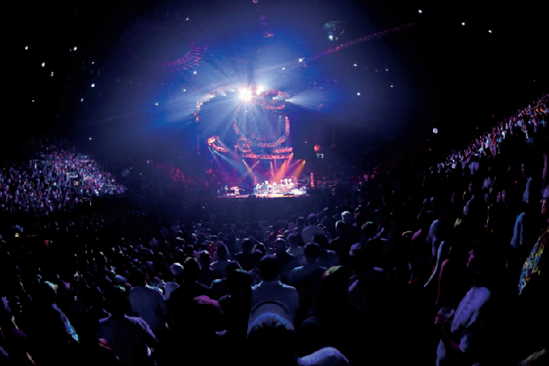Chapter 2. Working with Light
Without light, there is no photography, and because controlling the amount of light is the basis of all exposure, we can't discuss exposure without discussing light. In this chapter you learn to look at a scene and determine the direction and intensity of the light. And you learn to understand the color of light and what to do with white balance. Finally, you learn how to use flash, either built into the camera or attached to your camera's hot shoe — because it's all about working with the light in the scene.

This image was lit solely by the stage lighting, but because multiple lights were moving in different directions, all with different colors, I had to take them all into consideration. Some of the lights ended up being overexposed, while others were underexposed. Taken at 1/20 second, f/2.8, ISO 1600.
Direction of Light
The direction of the light is important because it determines where the shadows fall in the scene. The shadows create the depth in a photograph; if everything were evenly lit, the photo would look flat. The direction of the light also determines what is hidden and what is shown in a scene. Light can hit a subject from any angle, and I discuss the four most common lighting directions in this section.
Front lighting
I'm sure you remember when you were photographed as a child and told to stand in the light; you often had to squint at the photographer ...
Get Exposure Digital Field Guide now with the O’Reilly learning platform.
O’Reilly members experience books, live events, courses curated by job role, and more from O’Reilly and nearly 200 top publishers.

